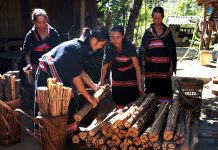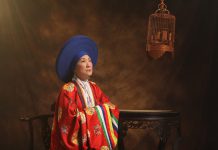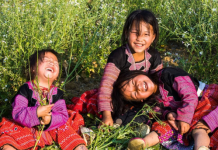Handmade silk produced by Co Chat Village in Nam Dinh Province for centuries is famous for its quality and durability.
 |
Co Chat Village is located on the banks of the Ninh Co River (Truc Ninh District, Nam Dinh Province).
According to the village’s elders, sericulture has existed in Co Chat for several hundred years. The village makes both yellow and white silk threads.
Silk production begins around March and April, and ends around October every year. At the end of the season, white silk can be found hanging everywhere on bamboo sticks in local markets.
 |
Silkworms mature and weave silk fiber to form cocoons. Around 20 to 25 days later the cocoons are harvested to be reeled and spun into raw silk.
 |
Silkworm cocoons are put into boiling water before silk fibre is unwound from them. After collecting this in reels, it is washed and rid of impurities and thrown, which means to twist or wind, into threads.
 |
The yellow bobbins of silk threads are dried and, delivered to workshops which carry out the final processing stages before selling them to traders.
 |
Mung, who has worked for nearly 30 years in sericulture, said she can process 50kg of yellow silk cocoons a day, earning around VND600,000 – 700,000 ($25.79 – $30.09).
 |
White silk is more common because it is easier to produce and has higher yield.
Silk spinning is hard work, involving sitting next to a hot, steaming coal stove in the middle of summer for hours.
 |
Finished hand-reeled threads produce three grades of silk: two fine grades that are ideal for lightweight fabrics, and a thick grade for heavier material.
 |
The treads are twisted into strands, treated and spun into bobbins before it is sold.
 |
Although the products of Co Chat Village are famous for good quality and durability, elders say the vocation could disappear in the not too distant future.
Despite sericulture delivering decent incomes, few of the village’s youth seem to be picking up the threads from their elders.































